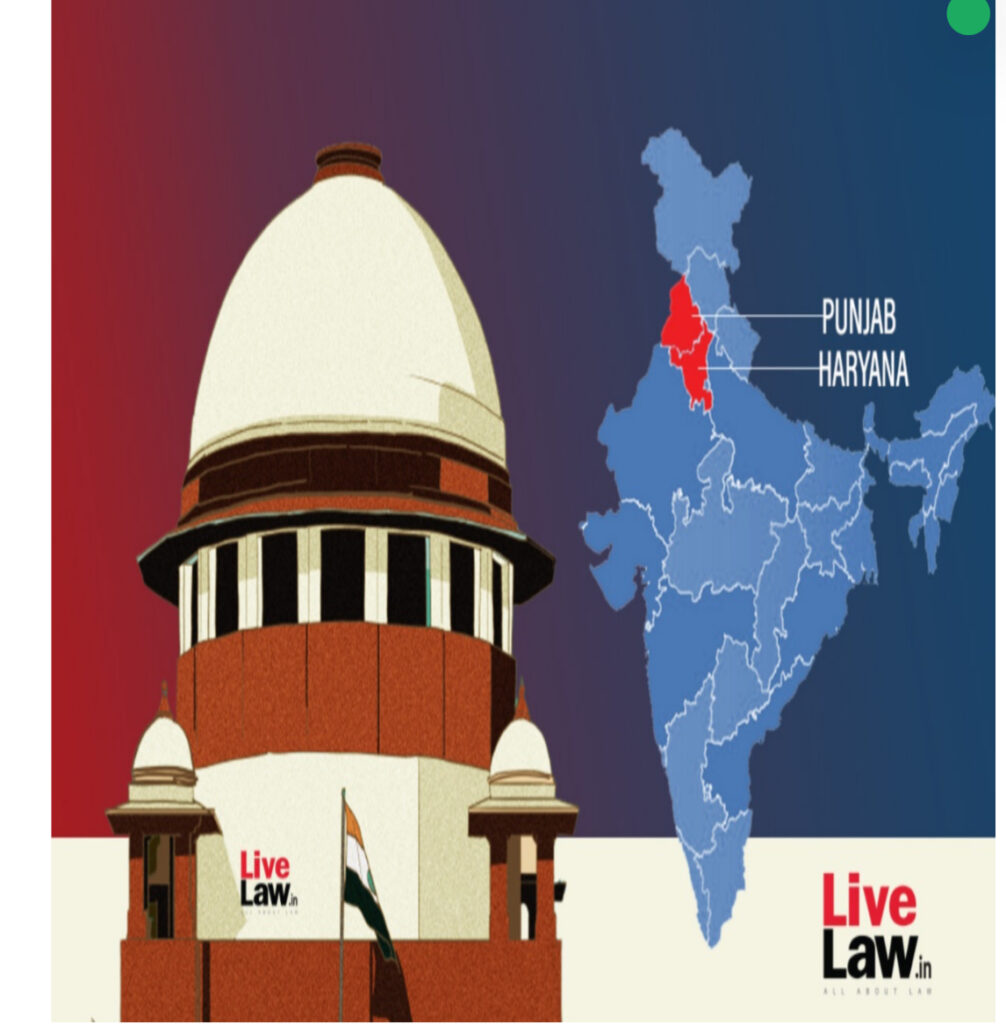
Introduction
Water has long been a source of life, sustenance, and development — but it has also become a source of conflict. In India, inter-state water disputes are not new, but few have matched the intensity, complexity, and duration of the Satluj-Yamuna Link (SYL) Canal conflict between Punjab and Haryana. Spanning decades, the dispute involves legal, political, and environmental dimensions that continue to shape regional dynamics in northern India.
Origin of the SYL Canal Concept
The Satluj-Yamuna Link Canal was conceptualized following the reorganization of Punjab in 1966, which led to the creation of Haryana. With the new state came new administrative and water-sharing challenges. The Ravi and Beas rivers, whose waters were mostly utilized by Punjab, became a matter of dispute.
In 1976, the Indira Gandhi-led central government issued a notification dividing the waters of Ravi and Beas among Punjab, Haryana, and Rajasthan, allocating 3.5 million acre-feet (MAF) to Haryana. The idea behind the SYL Canal was to provide Haryana a mechanism to draw its share directly from the Satluj River, which is linked to the Beas.
Legal and Political Developments
The Punjab Accord (1985)
To resolve the tensions, the Punjab Accord (also known as the Rajiv-Longowal Accord) was signed between then Prime Minister Rajiv Gandhi and Akali Dal leader Harchand Singh Longowal. One of the major provisions of the Accord was the completion of the SYL Canal, with the Supreme Court’s involvement to adjudicate disputes.
However, the political situation in Punjab was turbulent, with militancy and separatist sentiments on the rise. Longowal was assassinated soon after, and the Accord never fully materialized. Punjab witnessed mass protests against the SYL canal, with political parties and civil society opposing the transfer of water.
Construction and Halts
Haryana completed its portion of the canal in the 1980s, but Punjab delayed construction due to political opposition and unrest. Despite multiple Supreme Court directions, Punjab governments over the years have found ways to delay or oppose the project, citing riparian rights and declining groundwater levels.
In 2004, the Punjab State Assembly passed the Punjab Termination of Agreements Act, annulling all water-sharing agreements with neighboring states, including the SYL Canal agreement. This was a drastic move and led to more litigation.
Supreme Court Intervention
The matter reached the Supreme Court of India, which in 2016 declared the Punjab Termination of Agreements Act as unconstitutional, stating that a state cannot unilaterally terminate agreements related to interstate water sharing.
The Court emphasized the need to maintain federal unity and respect inter-state agreements, ordering that the SYL Canal be completed. However, the enforcement of this order has been challenging due to strong political resistance in Punjab.
Environmental and Socioeconomic Aspects
Punjab argues that the state is already facing severe water stress, with over 80% of its blocks declared “dark zones” (areas where groundwater extraction exceeds replenishment). The Punjab government and local farmers fear that the SYL Canal would further deplete their water resources and threaten agriculture, the backbone of the state’s economy.
Haryana, on the other hand, claims that its farmers are not receiving their legal share of water, affecting crop production and the rural economy. The canal is seen as essential for Haryana’s southern districts, which are semi-arid and dependent on canal irrigation.
The environmental debate is significant too. Construction of large-scale water projects like the SYL Canal requires deforestation, displacement, and modification of natural hydrological patterns. In the face of climate change and erratic monsoons, both Punjab and Haryana need to focus on sustainable water management instead of purely engineering-based solutions.
Federalism and the Role of the Center
The SYL issue also raises important questions about cooperative federalism. Can the Union government enforce agreements that states no longer want to honor? How can water disputes be resolved without affecting regional harmony? The SYL Canal conflict exemplifies the limits of legal remedies in the absence of political consensus.
The central government’s position has often been cautious, avoiding strong enforcement in fear of triggering regional unrest, especially in Punjab. With elections frequently influencing state decisions, political parties on all sides have used the SYL Canal as a vote bank issue, further complicating the matter.
Recent Developments
As of 2024-25, the SYL Canal dispute remains unresolved. The Supreme Court has repeatedly asked both states to negotiate and has directed the Union Ministry of Jal Shakti to facilitate talks. Punjab continues to argue for a reassessment of water availability, claiming that the original allocations were made on outdated data.
Meanwhile, Haryana maintains that legal orders must be enforced, regardless of political opinions or groundwater concerns. Periodic protests, both in favor and against the canal, continue to dominate local headlines.
Possible Solutions
Solving the SYL Canal dispute will require a multifaceted approach, including:
Conclusion
The Sutlej-Yamuna Link Canal issue is more than just a water dispute — it reflects the challenges of resource sharing, regional equity, political federalism, and environmental sustainability in India. While courts can provide legal clarity, the real solution lies in political will, mutual trust, and scientific policymaking.
Water may flow through canals, but peace and cooperation must flow through the channels of communication, compromise, and common vision.
References




